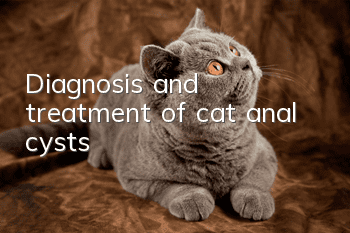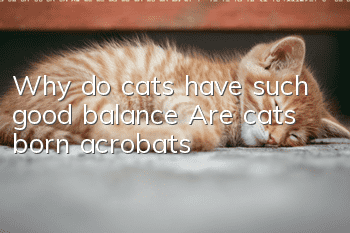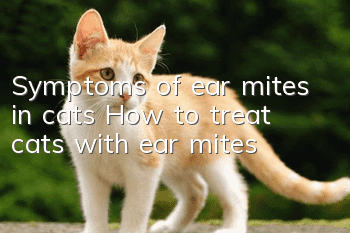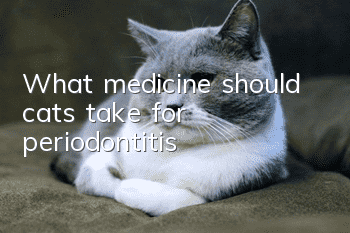Diagnosis and treatment of cat anal cysts

Feline anal cysts usually occur in middle-aged or elderly cats. Anal sac diseases that are easily induced are anal sac obstruction, chronic infection and anal sac abscess. Each anal sac is connected to the surface by a small tube; the sacs are lined with abundant glands that secrete fat. These glands produce oily fluids that have a special odor to help animals produce social markings within the group. When the fluid in the anal sac becomes thickened or the duct becomes blocked, the anal sac will become overfilled. As the water in the fluid is reabsorbed, the material components in the anal sac will dry out, and the anal sac will become blocked; severe blockage and infection may cause the anal sac to become clogged. Rupture and abscess of the cyst. Our hospital recently cured a case of anal cyst in a Siamese cat. We would like to share with you the incidence and treatment plan of the disease.
1. Incidence and clinical symptoms
According to the pet owner, the cat's appetite has recently decreased compared to before, and its activity level has also decreased. Yesterday, it was found that the cat had not eaten cat food, was in low spirits, and looked obviously emaciated, so it was sent to our hospital for examination. When taking the cat's body temperature, it was found that the skin around the cat's anus was red and swollen, the anal sacs were swollen, and there were purulent secretions and a small amount of blood oozing out. The cat also had difficulty defecation and was slightly constipated.
2. Laboratory examination
The overall condition of the animal during clinical examination was normal, with a moist nose, anal temperature of 38.2 degrees Celsius (normal), normal breathing, no signs of vomiting and diarrhea, normal drinking and urination, and no abnormality in abdominal palpation. Anal examination showed redness and swelling of the skin around the anus. Dirty and obvious infection. Squeeze at the 4 o'clock and 8 o'clock positions on both sides of the anus (at the anal sac duct) slightly lower than the anus. There is purulent secretion and blood; perform a blood test after venous blood collection.
3. Clinical diagnosis
(1) Clinical examination and analysis: Diagnosis is made through examination of the perineum and perianal area. The swollen anus of the sick animal was palpated and squeezed. The animal felt tenderness. After multiple squeezes, more purulent secretions and a small amount of blood flowed out of the anal sacs on both sides. The initial diagnosis was an anal cyst.
(2) Analysis of laboratory test results: No obvious abnormalities were found in routine blood indicators; biochemical indicators such as urea nitrogen and globulin were high, indicating the possibility of infection.
(3) Comprehensive clinical examination, laboratory examination and feeding observation can rule out other digestive system diseases and diagnose anal cyst.
4. Clinical treatment
4.1 Drug treatment
On the day of admission, disinfect the area around the anus of the sick animal. First, squeeze the blocked anal sac ducts on both sides of the anus. After the purulent secretions in the anal sac are squeezed out, rinse them with hydrogen peroxide and normal saline. Finally, inject levofloxacin into the anal sac.Apply the ointment once in the morning and once in the evening for one week. In order to shorten the recovery time, a quarter of each penicillin and streptomycin were injected intramuscularly every day for one week. On the third day of medication, the affected area of the anal sac showed obvious signs of improvement. On the fifth day of medication, the overall condition of the sick animals improved significantly and their activity level increased. After 7 days, the sick animals basically recovered and were discharged.
4.2 Dietary adjustment
Feed prescription cat food.
4.3 Postoperative care
After coming to the hospital within seven days, the animal’s anal sac area should be squeezed once to empty the contents to prevent obstruction of the sac duct, and levofloxacin ointment should be applied appropriately to the original affected area. Ensure the animals drink enough water.
5. Summary
5.1 Causes of anal cysts
① Seasons change, and the breeding environment easily becomes humid due to rainy season and other reasons. It is easy for bacteria to breed, thus inducing anal sac disease in sick animals.
② Pet owners often feed meat to animals. The feed is relatively simple. A high-protein and high-fat diet may cause excessive secretion of glands in the anal sac wall, causing anal sac obstruction. The accumulation of secretions in the sac can cause the anal sac to swell. , causing an inflammatory reaction.
5.2 Types of anal sac diseases
Anal sac diseases are generally divided into three categories, namely portal cystic duct obstruction, anal sac inflammation and anal sac abscess. The clinical symptoms differ little. Each condition represents a different aspect of the same disease process rather than a separate entity. a disease. Anal obstruction is usually characterized by thick dark secretions; anal cystitis is characterized by lighter-colored milky yellow secretions, which may bleed in severe cases; anal cysts are characterized by elevated body temperature and inflammation. The animal disease in this case mainly manifested two symptoms: anal sac obstruction and anal sac inflammation.
5.3 Prevention and treatment,
Emptying the anal sacs can relieve animal pain, actively disinfect the affected area, and combine antibiotic treatment to control infection; adjust the diet, avoid high fat and high protein during the disease, improve the feeding environment, and keep dry and ventilated to help animals of recovery.
6. Analysis
The incidence of anal sacs in cats is low, among which obstruction of the hepatic portal sac duct is the most common. When unilateral anal sac infection occurs, the contents of the contralateral anal sac duct should also be emptied to prevent reinfection; active emptying of the anal sac can prevent the disease and reduce its frequency. Generally, when purulent secretions are blocked, squeeze The process of pressing the anal sac must be slow and cannot be done roughly.
- How do you tell a cat’s age? Can you tell a cat's age?
- Reasons why cats go hungry
- Is it useful for cats to eat cat grass?
- Can a blue cat recognize its owner?
- Can female cats be neutered?
- Albendazole tablets will kill the cat
- What are the symptoms of cat thrombosis?
- Is high creatinine in cats necessarily a sign of renal failure?
- What types of pet cats are there? Choice of pet cat breeds!
- How to solve severe hair loss in cats



